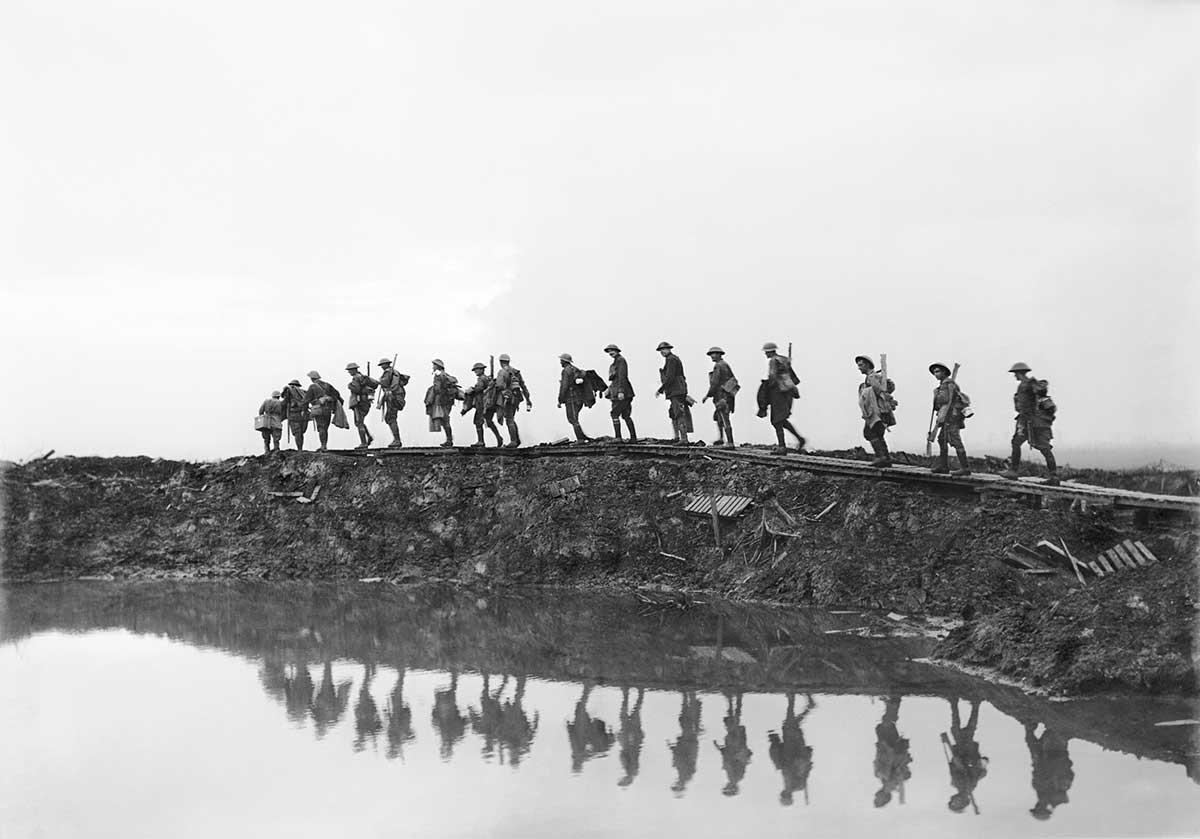Learning module:
War correspondents
War correspondents
20. Supporting our returned soldiers

After you sit down and order food, the man introduces himself as Alexander Wadsworth. He is a veteran of the Great War.
‘They were trying to do a good thing, I get that. During the war, the government decided they would try and build communities in farming areas, made up of us returned soldiers and our families. They wanted to help us out, sure, but they also wanted to try and populate the Australian interior. And there were other motives too. The authorities were worried about large groups of unemployed soldiers taking matters into their own hands. There had been riots in major cities within months of the war ending.’
He pauses, takes a sip of water.
‘Heck, the government’s been trying to settle people on the land and make self-sufficient, law-abiding farmers out of us for decades! They split up big pastoral estates and made them into small farms. The idea was that they’d give these small farms to us, and they’d turn it into some lovely English countryside. It was a complete failure if you ask me. I know, I was one of them...’
Lunch arrives and you eat your meal.
Afterwards, he says, ‘Oh, I’ve got this that I wrote. I’ve been trying to get it published for ages. Maybe you will have better luck than me, seeing as how you already work at a newspaper!’
He hands you a typed up note:
The ‘yeoman ideal’ meets reality
In the 19th century and well into the 20th, Australian policymakers held fast to the ‘yeoman ideal’, a somewhat romantic belief in the virtue of agricultural activity and the societal value of small-scale farming communities.
During the Great War, popular imagery of the sturdy, independent yeoman merged with that of the noble, patriotic digger to create a powerful symbolic character: the soldier settler, a worthy figure capable of promoting social stability and economic productivity.
After politicians and bureaucrats secured the federal/state agreement for soldier settlement in Melbourne in 1916, thousands of returning soldiers took advantage of the new state-based soldier settlement schemes. From as far north as the Atherton Tablelands in Queensland, to Kangaroo Island in South Australia, new settlements developed in every state.
The Western Australian government settled more than 5000 returned soldiers, many from the British Army, on farms. By 1929 just over 3500 remained on the land.
Difficulties encountered by soldier settlers across Australia during the 1920s sparked a Commonwealth investigation to account for losses. In 1929 Justice Pike identified the main causes of settler failure as a lack of capital and land, settler unsuitability and falling prices for agricultural produce.
Your task
As a senior journalist, Mr Callister now wants to see you using conceptual thinking in your articles. He also wants you to explain those concepts as you go.
You’ve got more than enough to write a story about soldier settlement. You also want to educate your reader. You know there are a lot of new concepts used in what you have been writing. Rather than have a glossary, you want to find a way to explain these new ideas in the text you are writing.
When you got your last promotion, Mr Callister handed you a manual showing you how to perform the more complex tasks. You turn to the section titled ‘Explaining concepts’. It has a good example of explaining concepts in the text. Here is the example, with the concepts defined in bold, and the section where they are explained underlined:
The Great War saw an increase in the use of technology in warfare. Technology, which is a machine, piece of equipment or method that is created to solve problems, included tanks, planes and mustard gas. The war also had widespread impacts on society, the group of people living together in a community, in Australia. Many returned soldiers had physical and mental injuries, and many women had gained experience in the paid workforce.
For your article you need to write a paragraph about soldier settlement, using two or more of the concepts listed and defined below.
Historical concepts:
- cause: something or someone that makes something happen or exist
- change: when something is made different over time, the opposite of continuity
- civilisation: an advanced state of human social organisation, typically including art, science and government
- contact: interaction between different societies, civilisations or countries
- continuity: things which remain relatively unchanged from one time period to another
- culture: the ideas, customs and social behaviour of a group of people
- effect: a change which is the result of an action or cause
- empathy: the ability to understand and share other people’s feelings
- evidence: information used to show that something is true
- nature: the physical environment, including plants, animals and landscapes — separate from humans and their creations
- perspectives: different ways of thinking about and understanding something
- significance: importance
- society: people living together in organised communities
- technology: a machine, piece of equipment or method that is created to solve problems
- trade: buying and selling goods and services
Write a paragraph explaining two or more concepts within it.
You submit your article. The past few years have been very busy for you and you have developed a lot of new skills. You have a big meeting coming up with the board of the Age. It is an interview for a promotion. If you get it, you will be Chief Correspondent!







